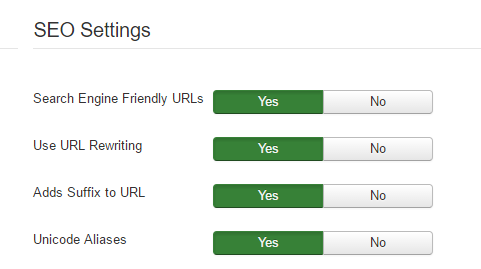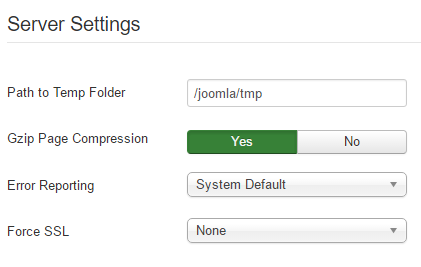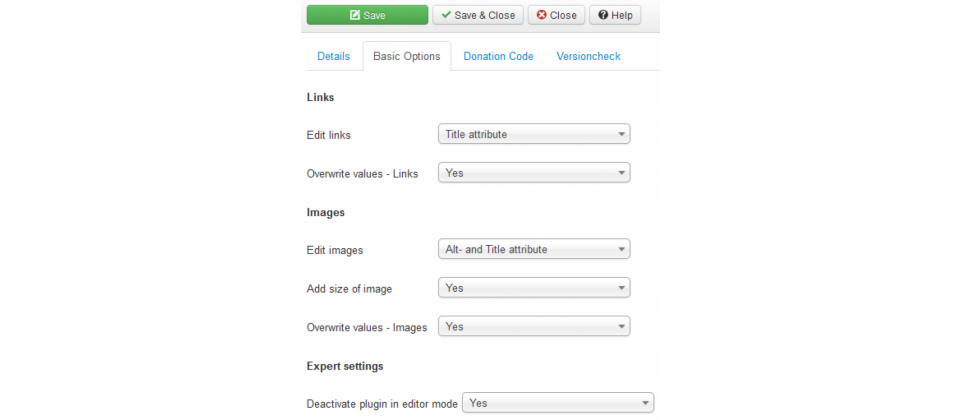10 Essential SEO Tips for Joomla You Must Know
Search engine optimization (SEO) is an important aspect of a website’s development process, as it provides valuable info to both search engines and visitors of a website. Joomla, as a complete Content Management System, features most of the settings you will need to optimize, in order to achieve better Google rankings.
1. Enable cacheJoomla comes with a handy cache feature that is disabled by default. As caching affects the overall loading speed of a website, it actually has a major impact on search engine optimization. To enable cache you will have to :
- Turn on Conservative Caching on the System tab of the Global Configuration, under Cache settings
- Enable the System – Cache plugin (where you might leave ‘On browser caching’ disabled)
- Enable the cache of your template (where available)
This option is enabled by default on a Joomla installation, but it can be tweaked even further by enabling URL rewriting. To enable URL rewriting you will have to rename htaccess.txt to .htaccess (mind the dot before the filename). With this option enabled your website’s URLs will not contain the ‘index.php’ part, thus making them more user-friendly, therefore more search-engine-friendly. You may also enable “adds suffix to URLs”, an option that will add a .html suffix to all your website’s pages. There is an ongoing discussion whether this option will enhance your website’s SEO, but we prefer to keep it enabled.
3. Use your aliases effectivelyThis is a feature that is often being disregarded by most new Joomla users. In fact, the alias is used as the url for each article, hence it will have to contain the article’s title, with all spaces replaced by dashes. You should never leave an article’s alias empty, as Joomla will autocomplete it with the article’s publication date and time – certainly not a very user-friendly information. Further more, if you create a menu item for an article this will override the article’s alias, so you will need to set the menu item’s alias accordingly.
4. Use your page titles effectivelyPage titles are a major factor for a website’s SEO, hence you will need to define them with care, making sure they include your main keywords. Again, pay extra attention to menu items, as their page title settings override the article’s page title. This is a very important step, especially for your website’s homepage title – it certainly has to be something more specific than “Home”.
5. Do not forget the meta descriptionsMeta descriptions are not visible to your website’s visitors – unless they are proficient source code readers. But still, search engines consider them as an important factor for your website’s ranking, as meta descriptions provide valuable information for your website’s content. Actually, a meta description is the text appearing beneath the link of your website on search engine result pages. You should use this setting to gain an advantage for your desired keywords.
6. Avoid duplication for your categories itemsSearch engines do not like duplicate entries – especially as meta descriptions. In the case of a category, you should avoid setting a generic meta description on the category’s menu item. You should define this meta description on the category settings (in the Publishing tab of the category settings), thus letting each article to have its own meta description.
7. Never leave the alt-text of an image file emptyAlternate text of image files has a great impact on your website’s SEO. You should never leave it empty, or – even worse – autocomplete this field with the image’s filename. Use your desired keywords with care, in order to describe each image in a way that even a screen reader can help a user to understand the role of an image within an article.
8. Enable gzip compression
A website’s performance has a great impact on search engine optimization. One of the first things to do, in order to boost your website’s performance is to enable gzip compression on the Global Configuration. This will shorten the loading time of your pages, thus making your website faster.
9. Enter a full description for all your sections and categoriesThese pages are great for organizing your site… and for improving Page Rank. If you organize your sections and categories carefully, your site becomes very easy for both people and search-engine spiders to navigate.
10. Don’t install and sample data when you set up a joomla siteWhen you launch your Joomla! Site, it’s very easy to forget to delete all the demo articles that come with it. That will give you pages, links and newsfeeds that are irrelevant to your topic. Delete your sample data and don’t forget to empty your trash as well!
Bonus: SEOFLI – SEO Friendly Links and Images PluginWith this plugin title and alt attributes are set automatically – Important for SEO
The title and alt attributes are important for search engine optimization, but unfortunately they are not respected very often. The plugin checks all links and images on these attributes. If they are not set, they are generated from the linked text or from the image name. Additionally there is the possibility to overwrite existing attributes with the automatically generated one.









Comments